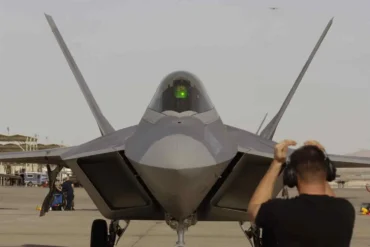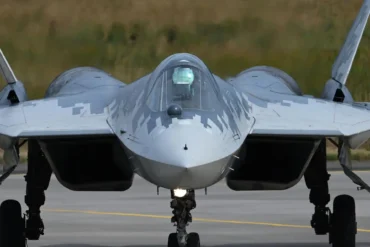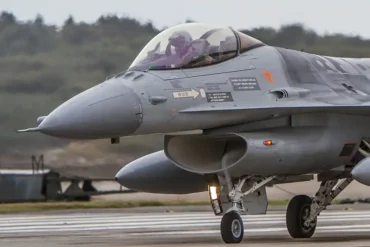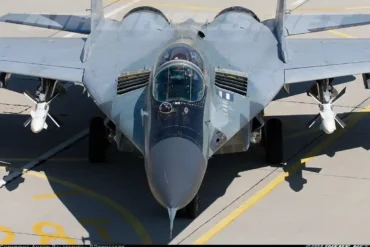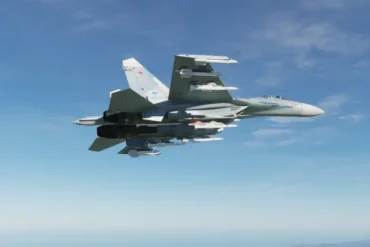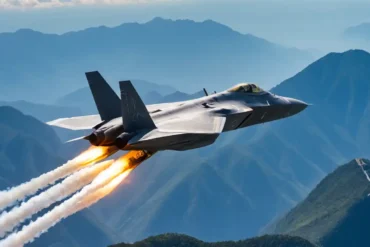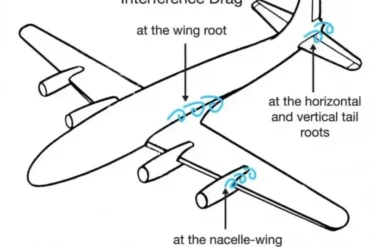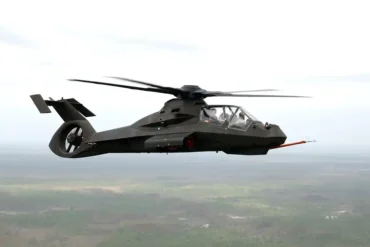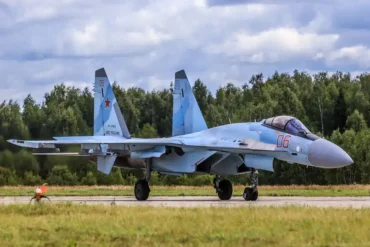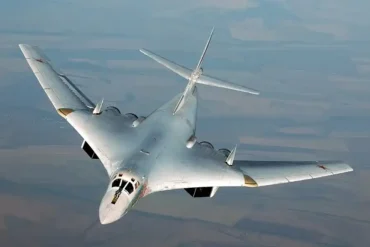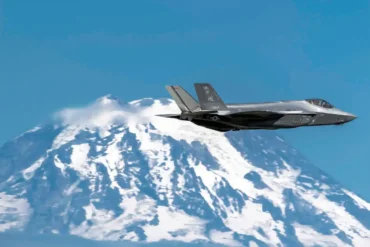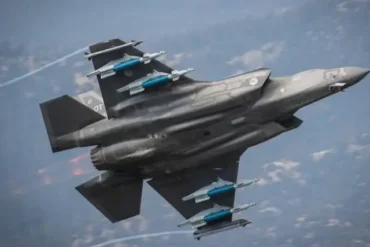The F-35 Lightning II, a state-of-the-art fifth-generation fighter aircraft, is known for its remarkable capabilities, including superior stealth, advanced avionics, and unparalleled agility. Among its many groundbreaking features, one of the most intriguing aspects of the F-35’s design is its air intake system. This system is not only crucial for the aircraft’s high-speed performance but also plays a pivotal role in maintaining stealth and enhancing engine efficiency.
In this article, we will explore the F-35 Lightning II air intake, with particular focus on the diverterless inlet system and its many benefits over traditional designs. From its weight reduction to its stealth-enhancing properties, we will dive deep into how this system contributes to the aircraft’s overall superiority.
Understanding the Diverterless Inlet Design
The F-35 Lightning II employs a highly innovative diverterless inlet (DSI) design, which stands out in the world of modern fighter aircraft. Unlike conventional aircraft inlets that rely on complex moving parts, the DSI is a much simpler and lighter system. It achieves the task of regulating airflow into the jet engine without the need for hydraulic actuators, ramp adjustments, or boundary layer diverters.
How Does the DSI Work?
The principle behind the diverterless inlet is straightforward yet highly effective. When an aircraft travels at supersonic speeds, the air entering the engine is also supersonic. However, jet engines are designed to operate with subsonic airflow. If supersonic air were to enter the engine unregulated, it could cause dangerous vibrations or even damage the engine’s turbine blades. This is where the DSI comes into play.
The DSI incorporates a bump-like structure on the front of the intake. This bump serves as a compression surface that slows the incoming supersonic air down to subsonic speeds before it enters the engine. The DSI also helps distribute pressure evenly, which minimizes turbulence and ensures that the airflow entering the engine is smooth and optimal for thrust generation.
Key Advantages of the Diverterless Inlet
- Weight Reduction: Traditional aircraft inlets were made up of numerous mechanical parts, such as hydraulic actuators and ramps, which added substantial weight to the aircraft. In contrast, the DSI eliminates these moving components, resulting in a lighter, more efficient design.
- Simplified Maintenance: With fewer moving parts, the DSI requires less maintenance, reducing operational costs and downtime. This is particularly advantageous for military aircraft, where reliability and cost-efficiency are crucial.
- Enhanced Stealth: The DSI also provides a stealth advantage. The bump that sits in front of the engine intake can help deflect and scatter radar waves, making the aircraft more difficult to detect by enemy radar systems. This contributes significantly to the F-35’s low observability—a key feature of its fifth-generation design.
- Increased Engine Efficiency: The DSI helps ensure that the engine receives optimal airflow at all speeds, which improves engine performance and contributes to the aircraft’s overall agility and speed.
Supersonic Airflow and the Importance of Subsonic Intake
When an aircraft such as the F-35 Lightning II reaches supersonic speeds, the air entering the engine must be slowed down before it can be properly processed by the engine’s compressor and turbine blades. This is necessary because turbine engines are not designed to handle the destructive forces of shockwaves that form when air moves faster than the speed of sound.
The DSI design is specifically optimized to address this challenge. The bump at the front of the intake slows the incoming supersonic air to subsonic speeds, which are more manageable for the engine’s internal components. This allows the engine to operate efficiently, even when the aircraft is flying at high speeds.
Boundary Layer Management: A Critical Aspect of Intake Design
One of the most notable aspects of the F-35’s air intake is the management of the boundary layer. The boundary layer is a thin layer of turbulent air that forms along the surface of the aircraft as it flies. When this air enters the engine, it can cause instability and disrupt the flow of air into the engine’s compressor, leading to decreased performance.
In many traditional aircraft designs, boundary layer air is dealt with through complex duct systems or mechanical diverters that force unwanted air away from the engine. The F-35, however, employs an entirely different approach.
The Role of the DSI in Boundary Layer Management
Rather than using a complex mechanical system, the DSI bump redirects the boundary layer away from the engine’s intake. This helps prevent the turbulent, high-pressure air from entering the engine, ensuring that only clean, laminar air reaches the engine. This not only improves engine performance but also contributes to the overall aerodynamic efficiency of the aircraft.
Air Force Research Lab’s Groundbreaking Work on the F-35 Inlet
The development of the diverterless inlet was the result of extensive research conducted by the Air Force Research Laboratory (AFRL). Their innovative approach aimed to simplify the intake design while maintaining or even improving engine performance at high speeds.
The AFRL’s advanced compact inlet system eliminates the need for boundary layer diverters and drastically reduces the overall weight of the aircraft. This design, which features the iconic DSI bump, offers several advantages over previous intake designs, including:
- Weight Savings: The DSI design saves approximately 480 pounds compared to traditional intake systems. This reduction in weight is significant for improving the overall performance and maneuverability of the F-35.
- Cost Savings: By eliminating moving parts and complex components, the DSI design also results in savings of up to half a million dollars over the lifespan of the aircraft.
- Enhanced Stealth: The DSI design contributes to the F-35’s low radar cross-section (RCS), making it more difficult for enemy radar systems to detect and track the aircraft.
The Future of Aircraft Intake Systems: Innovation and Efficiency
As aircraft technology continues to evolve, the development of advanced intake systems like the F-35’s diverterless inlet is paving the way for more efficient, cost-effective, and stealthy designs. The DSI is a prime example of how innovative engineering can address complex challenges in aerodynamics, performance, and stealth technology.
In the future, we can expect to see more aircraft incorporating similar intake technologies, as the demand for next-generation fighter jets and unmanned aerial systems grows. The lessons learned from the F-35’s intake design will likely influence the development of hypersonic aircraft and other high-performance aerospace vehicles.
Conclusion: The F-35’s Air Intake System—A Marvel of Modern Engineering
The F-35 Lightning II is one of the most advanced and capable fighter jets in the world, and its air intake system plays a critical role in its success. The diverterless inlet (DSI) design offers numerous advantages over traditional aircraft inlets, including weight reduction, simplified maintenance, enhanced stealth, and improved engine efficiency. Thanks to the innovative work of the Air Force Research Laboratory, the F-35 is able to operate at supersonic speeds with optimal airflow, making it one of the most formidable aircraft in existence.
As military aviation continues to advance, the F-35’s air intake system represents a leap forward in aerodynamic design and engine integration. Its groundbreaking technology will likely serve as a foundation for the development of future fighter aircraft, setting new standards for performance, reliability, and stealth capabilities.

